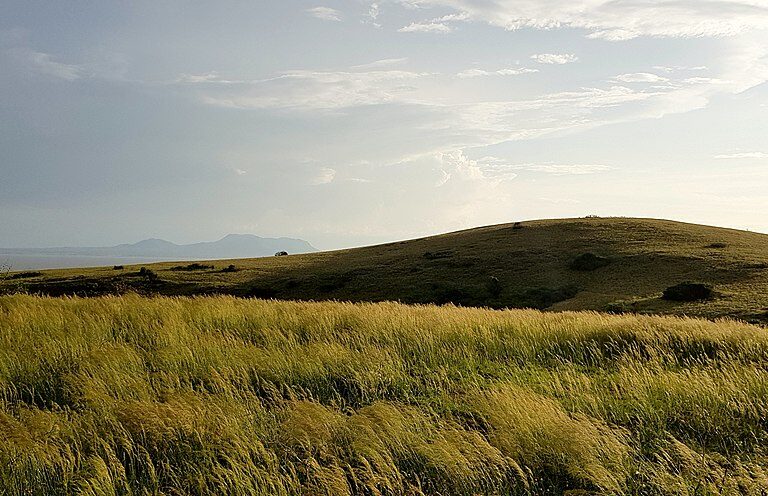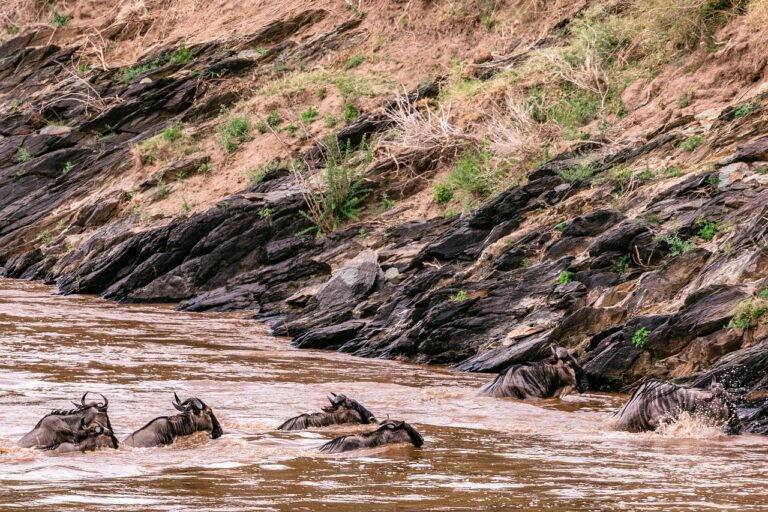Eco-tourism is an increasingly popular form of tourism that combines the enjoyment of natural areas with the protection and conservation of those areas. The Sheldrick Wildlife Trust, a Kenyan-based organization, is one organization that is at the forefront of this approach, combining conservation efforts with eco-tourism through its Eco Lodges project.
The Sheldrick Wildlife Trust’s Eco Lodges are located in some of the most beautiful and biodiverse areas of Kenya, providing visitors with the opportunity to experience the beauty of Kenya’s wilderness while supporting conservation efforts. The lodges are designed to have a minimal environmental impact and are powered by solar energy. They also provide jobs for locals and are a great way to educate visitors about conservation issues and the importance of protecting biodiversity.
This blog will explore the Sheldrick Wildlife Trust’s Eco Lodges project in more detail and discuss the many benefits of eco-tourism for conservation. From providing economic incentives for local communities to protecting wildlife to raising awareness about conservation issues, the Sheldrick Wildlife Trust’s Eco Lodges project is a model for how eco-tourism can be used as a tool for conservation.
What are the Sheldrick Wildlife Trust Eco Lodges?
The Sheldrick Wildlife Trust Eco Lodges are a network of eco-friendly camps and lodges located in some of Kenya’s most beautiful and biodiverse areas. These lodges provide a unique opportunity for visitors to experience the beauty of Kenya’s wilderness while supporting conservation efforts. The lodges are located in the heart of the Tsavo Conservation Area, home to some of the largest elephant herds in the world and other iconic wildlife species such as lions, leopards, and cheetahs.
The lodges offer a range of accommodation options to suit different budgets and preferences, from luxury tented camps to more rustic eco-lodges. All the lodges are designed to have a minimal environmental impact and are powered by solar energy. The lodges also employ local staff, providing jobs and income for the surrounding communities.
The Benefits of Eco-Tourism for Conservation
Eco-tourism is a form of tourism that focuses on experiencing natural areas while minimizing negative impacts on the environment and supporting conservation efforts. This approach to tourism has many benefits for conservation, some of which include the following:
- Providing a sustainable source of income for local communities: Eco-tourism can provide a sustainable source of income for local communities, particularly in areas where traditional sources of income such as agriculture or hunting are no longer viable. By providing jobs and income through eco-tourism, local communities are more likely to support conservation efforts and protect wildlife.
- Raising awareness about conservation issues: Eco-tourism can raise awareness about conservation issues by educating tourists about the importance of protecting natural areas and the species that live there. This can lead to greater support for conservation efforts and more funding for conservation organizations.
- Minimizing negative impacts on the environment: By promoting sustainable tourism practices, eco-tourism can minimize negative environmental impacts such as pollution and destruction of habitats. This helps to preserve the natural beauty of the area for future generations.
- Encouraging conservation through economic incentives: Eco-tourism can provide economic incentives for conservation by creating a market for sustainable products and services. This can lead to increased investment in conservation and the development of sustainable tourism infrastructure.
- Supporting local communities: Eco-tourism can support local communities by providing jobs, income, and education. This can lead to sustainable development and improved living standards.
Overall, eco-tourism is an effective tool for conservation because it provides economic incentives for local communities to protect wildlife and habitats, raises awareness about conservation issues, minimizes negative impacts on the environment, encourages conservation through economic incentives, and supports local communities.
Sheldrick Wildlife Trust Programs
The Sheldrick Wildlife Trust runs several programs to protect and conserve wildlife in Kenya. These programs include:
- Orphans’ Project: The Sheldrick Wildlife Trust’s main program is the Orphans’ Project, which rescues, rehabilitates, and reintegrates orphaned elephants, rhinos, and other animals back into the wild. This program includes a digital foster program that allows individuals to support the trust’s field projects by fostering an orphaned elephant, rhino, or giraffe in their care.
- Anti-Poaching: To combat ivory, bushmeat, and rhino horn poaching, the Sheldrick Wildlife Trust operates Anti-Poaching Units in partnership with the Kenya Wildlife Service (KWS).
- Canine Unit: The Sheldrick Wildlife Trust operates a specialist Canine Unit with trained dogs to track and detect illegal wildlife products such as ivory, rhino horn, and bush meat, as well as guns and ammunition.
- Aerial Unit: Supporting the Sheldrick Wildlife Trust’s ground efforts is an Aerial Unit, which takes part in security patrols and provides support to search and veterinary intervention for injured elephants and wildlife, as well as search and rescue operations for orphaned elephant calves and wildlife emergencies.
- Veterinary Units: The Sheldrick Wildlife Trust operates four Mobile Veterinary Units and a Sky Vet initiative headed by Kenya Wildlife Service Vets to alleviate the suffering of injured wild animals. The veterinary units operate in different regions of Kenya, such as Tsavo, Mara, Meru, and Amboseli.
- Community Outreach: The Sheldrick Wildlife Trust’s Community Outreach program aims to educate and engage local communities in conservation efforts.
- Saving Habitats: The Sheldrick Wildlife Trust’s project aims to safeguard wilderness areas and critical elephant habitats.
- Water for Wildlife: The Sheldrick Wildlife Trust’s Water for Wildlife project aims to provide water relief to wildlife during drought and scarcity.
- Eco Lodges: The Sheldrick Wildlife Trust Eco Lodges project provides a way to combine conservation efforts with eco-tourism by offering eco-friendly accommodation and supporting conservation efforts in the surrounding areas.
Eco-Tourism at The Sheldrick Wildlife Trust
The Sheldrick Wildlife Trust Eco Lodges are a great example of how eco-tourism can be used as a tool for conservation. By providing economic incentives for local communities to protect wildlife and habitats, eco-tourism can help conserve biodiversity and improve livelihoods.
One of the main benefits of eco-tourism is that it can provide a sustainable source of income for local communities. This is particularly important in areas where traditional sources of income, such as agriculture or hunting, are no longer viable. By providing jobs and income through eco-tourism, local communities are more likely to support conservation efforts and protect wildlife.
Eco-tourism can also help to raise awareness about conservation issues. By visiting areas of natural beauty and learning about the importance of protecting them, tourists can become more aware of conservation issues and the importance of protecting biodiversity. This can lead to greater support for conservation efforts and more funding for conservation organizations like the Sheldrick Wildlife Trust.
The Sheldrick Wildlife Trust Eco Lodges Experience
Staying at the Sheldrick Wildlife Trust Eco Lodges is a unique and unforgettable experience. Guests can expect to be surrounded by some of the most beautiful and biodiverse areas of Kenya, with the opportunity to see a wide variety of wildlife, including elephants, lions, leopards, and cheetahs.
One of the highlights of staying at the lodges is the opportunity to go on guided wildlife safaris. Experienced guides lead these safaris with a deep knowledge of the area and its wildlife. Guests can also expect to learn about conservation efforts and the importance of protecting wildlife in the area.
Another unique aspect of staying at the lodges is the opportunity to engage with local communities. Guests can visit local schools and learn about the local people’s culture and way of life. This is a great opportunity to learn about the importance of conservation from a local perspective.
Conclusion
The Sheldrick Wildlife Trust Eco Lodges are a great example of how eco-tourism can be used as a tool for conservation. By providing economic incentives for local communities to protect wildlife and habitats, eco-tourism can help conserve biodiversity and improve livelihoods. It’s a unique and unforgettable experience for visitors to experience the beauty of Kenya’s wilderness while supporting conservation efforts. If you are planning a trip to Kenya and want to make a difference, consider staying at the Sheldrick Wildlife Trust Eco Lodges, you will not only have a great time but also be contributing to the conservation of wildlife and habitat.







